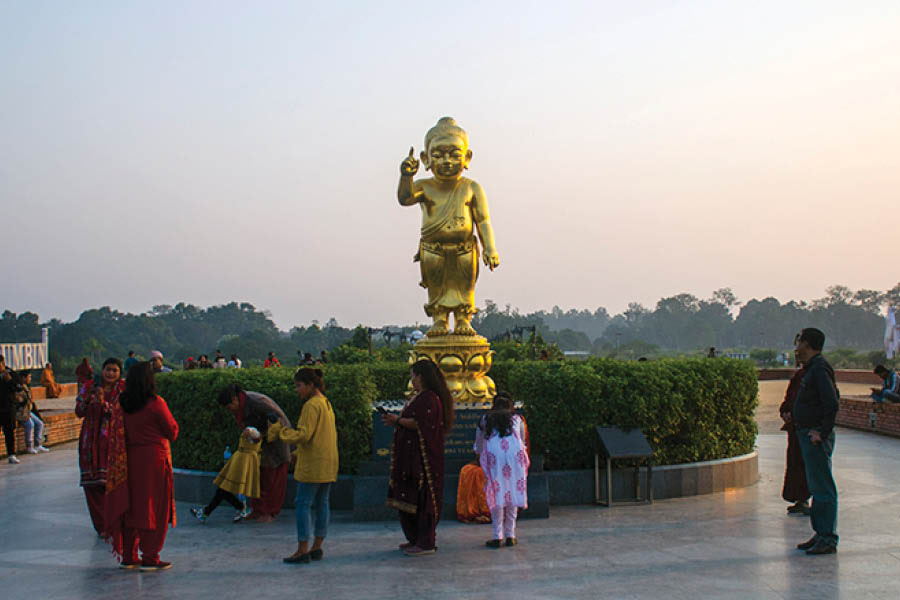Lumbini is the birthplace of Buddha. Today, Lumbini is located in Nepal and along with Bodh Gaya, Sarnath and Kushinagar forms the famous Buddhist circuit. Bodh Gaya is the place of enlightenment, Sarnath is the place of his first teaching and Kushinagar is the place of death and these four can be considered as the char dham of Buddhism.
History of Buddha’s birth

The Maya Devi Temple towers above scattered ruins
Buddha was born as Siddhartha Gautama and was the son of Suddhodana and Maya Devi. Although Suddhodana was often referred to as a king but recent historical investigation suggests that he was a leader of Shakya clan of the Himalayan foothills region. His mother, Maya Devi (or Mahamaya), was a princess from the Koliya dynasty of Nepal. The parents of Buddha were based in Kapilavastu, Nepal and when Maya Devi became pregnant, she was sent to her father’s place for the birth of the child. Before she reached her father’s place, she gave birth to a male child in a place called Lumbini and died soon after. The birth took place on a full moon in March / April in BC 623.
Legends of Buddha’s birth
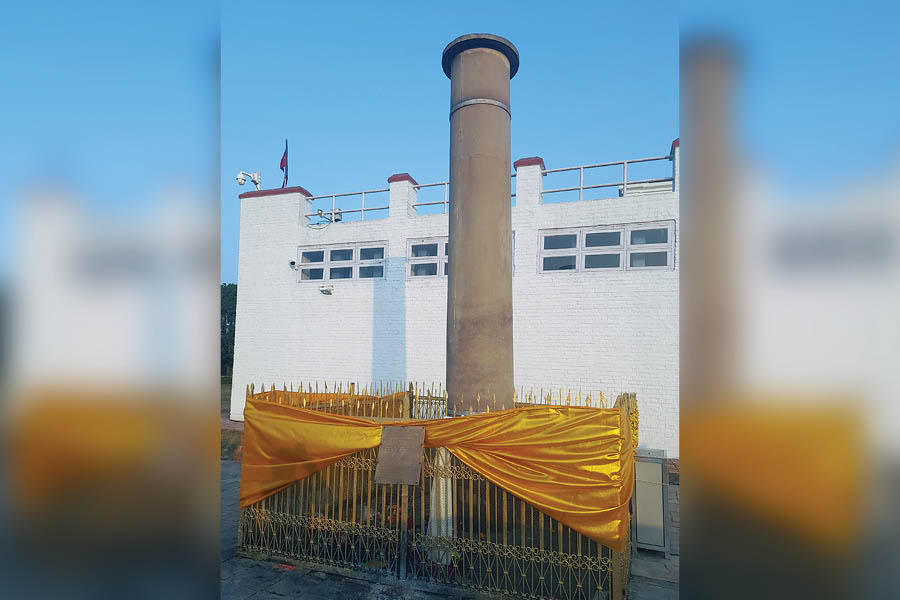
The Asokan pillar next to the Maya Devi temple
According to legend, one day the baby was conceived when her mother dreamt of a white elephant with six tusks entering her body from the right side. The legend further narrates that immediately after birth, the baby began to walk seven steps forward and at each step, a lotus flower appeared on the ground. Learned men and scholars, who saw the baby after his birth, said that he had all marks of a great man. They further added that he would either be a great king or a great religious leader. We all know that the second prediction turned out to be true and today Lumbini is not only an important Buddhist pilgrimage but also a UNESCO heritage site.
Lumbini as a tourist spot
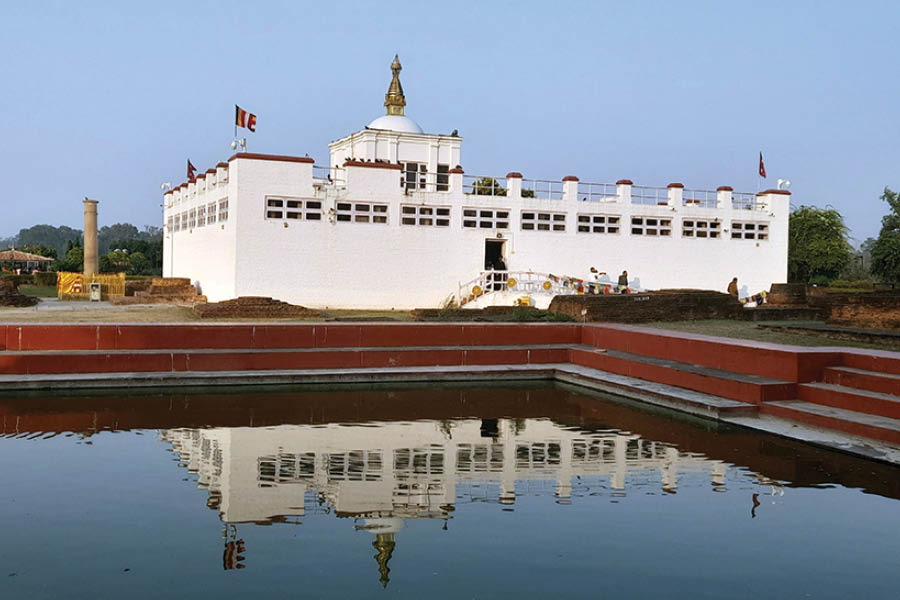
Maya Devi temple with the pond that dates back to the time of Buddha’s birth
Lumbini is located just an hour’s drive from the Sonauli India-Nepal border post and Indians don’t need a passport to cross the border. The Lumbini complex is a rectangular piece of land measuring 4.8km in north – south direction and 1.6km in the east-west direction. It houses the Maya Devi Temple on the southern end and the Japanese Peace Pagoda on the northern end. The park also houses several monasteries of different countries and of autonomous regions. The beautifully landscaped park is complete with water channels and manicured lawns along with hedge walls and flower beds.
No wonder the Maya Devi temple is the star attraction of the complex. The present white-washed structure dates back to 2003 and enshrines the exact location of Buddha’s birthplace. The present structure stands on excavated ruins which were constructed over a period of almost 1,000 years. The earliest part of the ruins dates back to the time of Asoka (reign: BC 268 – 232). Later, various other rulers and patrons of Buddhism reconstructed the shrine and the last one dates back to 7th century CE.
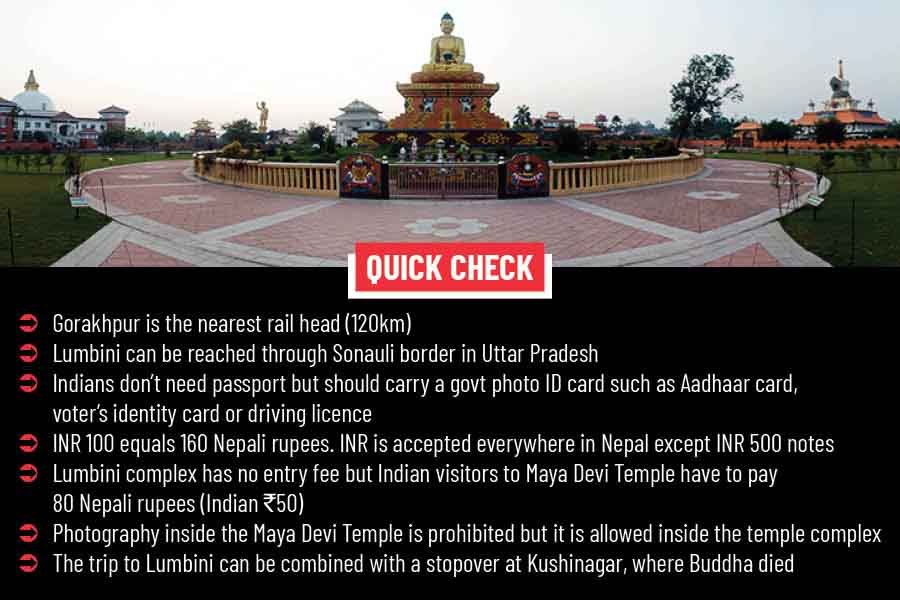
Maya Devi temple is housed in a separate complex within the Lumbini complex. The modern milk white structure dominates the complex. Inside the temple, a marker stone marks the exact place of birth and nativity sculptures showcase the birth scene. Both inside and outside the temple house ruins and on the western side of the temple stands an Asokan pillar. On the south-west corner of the temple is a pond which dates back to the time of Buddha’s birth.
The Maya Devi temple complex occupies only a small part of the Lumbini complex. The Lumbini complex is spread over a large area complete with walking pathways, water channels, arched bridges, an eternal flame, various other Buddhist temples and statues.
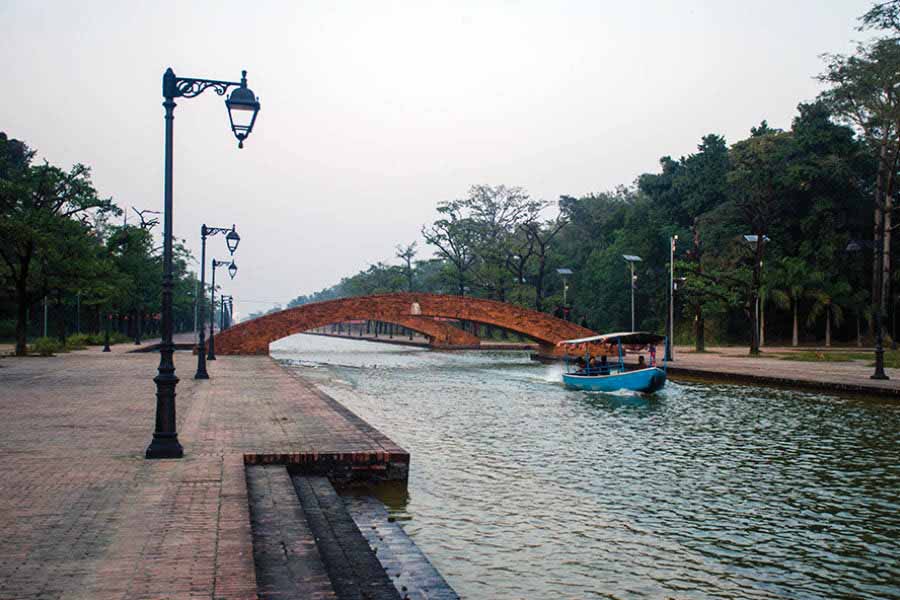
A boat passes beneath the arched bridges spanning across the water canals
Also present is a museum and habitat centre. Boats powered by diesel engines offer joy rides for tourists but environment-conscious people would always prefer a walk. Several portions of the Lumbini complex have its share of wilderness and is home to a wide assortment of flora and fauna. They include the sarus crane and the nilgai, both of which are frequently spotted. The complex also houses a small market along with a handful of eateries. The market marks the end of the southern part of the complex. Those eager for more can cross the road and proceed to the northern part of the complex housing the Japanese Shanti Stupa.
